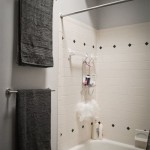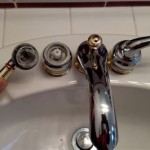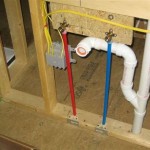Understanding Bathroom Sink Drain Pipe Gaskets
Bathroom sink drain pipe gaskets are essential components that ensure a watertight seal between the drain pipe and the sink basin. These gaskets prevent leaks and drips, maintaining a clean and functional bathroom environment. Understanding the different types of gaskets, their function, and when they need replacement is crucial for any homeowner. This article will delve into the intricacies of bathroom sink drain pipe gaskets, providing insights into their importance and proper maintenance.
Types of Bathroom Sink Drain Pipe Gaskets
Bathroom sink drain pipe gaskets come in various shapes, sizes, and materials, each suited for specific applications. The most common types include:
1. Flat Gaskets:
Flat gaskets are the simplest form, consisting of a thin, circular or oval-shaped rubber or plastic piece. These gaskets are generally used in older sink drain assemblies, but can also be found in some newer ones. They are placed between the drain pipe and the sink basin, creating a tight seal with pressure.
2. O-Rings:
O-rings are another common type of gasket, featuring a circular cross-section. They are typically made from rubber or silicone and are used in drain assemblies with a threaded connection. The O-ring sits in a groove on the drain pipe, providing a seal when the pipe is tightened.
3. Flange Gaskets:
Flange gaskets are designed for drain assemblies with a wider flange at the base of the drain pipe. These gaskets have a wider, flat surface that connects to the sink basin, creating a more robust seal. Flange gaskets are often found in newer drain assemblies, offering a more durable solution.
Function of Bathroom Sink Drain Pipe Gaskets
The primary function of a bathroom sink drain pipe gasket is to prevent leaks and drips by creating a watertight seal between the drain pipe and the sink basin. When water flows down the drain, it can create pressure on the connection point, potentially causing leaks if the seal is not tight enough. The gasket acts as a barrier, preventing water from escaping and ensuring smooth drainage.
Beyond preventing leaks, gaskets also contribute to the overall performance of the sink drain system. They dampen vibrations and noises caused by water flowing through the drain, creating a quieter and more comfortable bathroom experience. Additionally, gaskets protect the metal components of the drain assembly from corrosion and wear, extending their lifespan.
Signs of a Worn-Out or Damaged Gasket
Recognizing the signs of a worn-out or damaged gasket is essential for timely replacement. Common indicators include:
- Leaks or drips around the drain pipe connection.
- Water pooling under the sink.
- Noisy drainage, with gurgling or rattling sounds.
- A visible crack or tear in the gasket.
- The gasket becoming brittle or hardened.
If you notice any of these signs, it is crucial to replace the gasket before the problem worsens, potentially causing damage to the sink or surrounding area.
Replacing a Bathroom Sink Drain Pipe Gasket
Replacing a bathroom sink drain pipe gasket is a relatively simple task that most homeowners can handle themselves. Here are the general steps involved:
- Turn off the water supply to the sink. This is typically done by turning the shut-off valve located under the sink or behind the wall.
- Remove the drain assembly from the sink. This may involve unscrewing the drain stopper, the tailpiece, and the connecting nuts. The specific steps will vary depending on the drain assembly design.
- Inspect the drain pipe and gasket for any damage or wear. Replace the gasket with a new one that matches the size and shape of the old gasket.
- Reassemble the drain assembly, ensuring that the gasket is correctly positioned between the drain pipe and the sink basin.
- Tighten all connections securely, but avoid overtightening, which can damage the gasket or threads.
- Turn the water supply back on and test the drain for leaks.
If you are unsure about any part of the process, it is always best to consult a professional plumber to ensure that the gasket is replaced correctly and safely.
By understanding the different types of bathroom sink drain pipe gaskets, their function, and the signs of wear and tear, homeowners can proactively maintain their bathroom sink drainage system, preventing leaks and ensuring a smooth and reliable operation.

How To Fix Or Replace A Leaky Sink Trap Hometips

Bathroom Sink Drain Leaking Around Threads Premier Plumbing Inc

Common Sink Leaks You Could Probably Fix Yourself
How To Install Bathroom Sink Drain Queen Bee Of Honey Dos

Replace Sink Strainer Gasket Diy Plumbing Kitchen Remodel Faucet Repair

Bathroom Sink Drain Leaking Around Threads Premier Plumbing Inc

New Bathroom Sink Drain Leaks At Threads

Sanitary Ware Factory P Trap Shower Flower Drain Rubber Gasket China Wash Basin Plugs Made In Com

How To Fix Kitchen Sink P Trap Leaking Pipe Connection Nut

Delta Bathroom Sink Pop Up Drain Assembly Gasket Rp6142 The Home Depot
Related Posts







